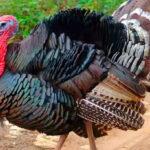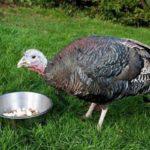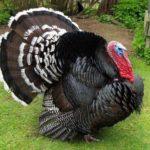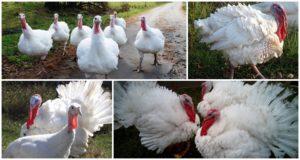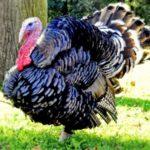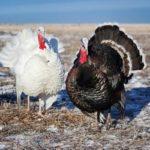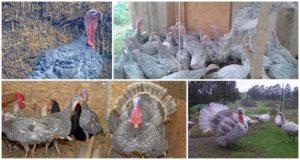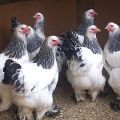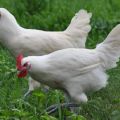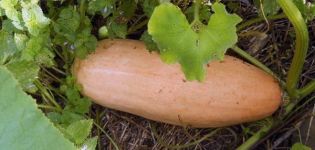Description of turkeys of the Bronze-708 breed, maintenance and care at home
Bronze-708 turkeys are very popular among farmers. This cross is widely used due to its tender meat and high egg production parameters. In addition, the birds have a beautiful appearance. The combination of aesthetic characteristics, unpretentious care and a rapid increase in body weight make these turkeys very popular.
Description and origin
A distinctive feature of birds is the possibility of breeding in large farms. Initially, birds are raised for slaughter. At the same time, you should not try to use them for long-term breeding. This is due to the presence of recessive genes. As a consequence, poults and the first generation will differ in key parameters.
Initially, bronze turkeys, which were distinguished by a wide chest, were developed by American scientists. The starting point for the hybrid was wild birds and the black English breed. As a result, we managed to get a premium breed. Further developments began to be carried out by the British. To improve key performance they developed a breed called the orlopp bronze.
The next stage of work was carried out by France. Scientists of this country managed to get a medium-heavy cross on the basis of the orlopp bronze breed, which was named bronze-708. These turkeys are large in size and have a wide chest. This makes them an excellent basis for creating hybrids.
Distinctive properties of the breed are:
- body strength;
- bronze shade of plumage;
- body density;
- legs wide apart;
- neck of moderate length;
- gray skin on the head and neck.

The tail of turkeys of this breed resembles a fan in appearance. In this case, longitudinal black stripes are located on the back.
Breed productivity
This hybrid breed has strong immunity and is capable of rapidly gaining body weight. The slaughter of young animals is carried out at 5-6 months. In this case, birds can weigh 10-17 kilograms.
The daily weight table shows the dynamics of its growth:
| Age | Female weight, grams | Male weight, grams |
| 3 days | 50 | 56 |
| 7 days | 140 | 160 |
| 2 weeks | 340 | 390 |
| 1 month | 1100 | 1400 |
| 2 months | 3700 | 4800 |
| 3 months | 7300 | 9800 |
| 5 months | 11000 | 16900 |
The characteristics of birds include fairly high egg production parameters. 1 female is capable of producing 70-150 eggs during the year. A stable collection can be expected by 9-10 months. With the advent of cold weather, turkeys continue to lay eggs.
Pros and cons of turkeys bronze-708
The nuances of maintenance and care
To grow birds at home, they certainly need to make an aviary. There should be at least 1 square meter of area per bird. The temperature regime in the poultry house should be no more than +20 degrees in summer and not less than +5 degrees in winter. It is also worth excluding drafts. Keeping cells clean is essential.
Straw, sawdust, hay should be laid on the floor. It is recommended to change the litter systematically. It is important to set perches in the warmest place in the house. They should be placed 40-50 centimeters from the floor. It is recommended to place the nests in the darkest place.
To prevent parasites in the poultry house, it is worth putting a container filled with sand and ash. There the turkeys will be able to bathe by cleaning their feathers. During the warm season, birds need walks. They can perform them in the yard or in the aviary. In this case, it is recommended to sow the area for walking with grass and make a canopy.

With the arrival of spring, it is recommended to disinfect the places where birds are kept. The room should be treated with hot water with the addition of caustic soda. 2 females and 1 male can live in one enclosure. In this case, it is impossible to settle several males at once. They can get into serious fights, which will lead to severe trauma.
How to feed the bird?
For turkeys to gain weight quickly, they need a high-calorie diet. Usually, ready-made compound feed is used for this. Cereals are used as the basis for such mixtures. Experienced breeders can prepare the mix themselves. In the menu of turkeys, you should definitely include bone meal, cake, fish oil. Since summer, it is recommended to prepare the following products for birds:
- hay;
- herbal flour;
- sauerkraut;
- a mixture of herbs - it should consist of rape, nettle, alfalfa.
Birds need chalk, shell rock and gravel to improve the absorption of food. To increase egg production, turkeys are advised to give more vegetables and herbs. Of no small importance is the intake of a sufficient amount of calcium into the body. Otherwise, the eggs will be brittle.
Breeding features
Turkeys have excellent maternal instinct. However, it will not be possible to get a large number of birds in a natural way. Therefore, turkey poults need to be incubated. For this, it is recommended to choose the right eggs. They must be perfectly shaped and of medium size. The shell must be free of build-ups or other irregularities.
Possible diseases and methods of their treatment
Adult birds of this breed are considered to be very hardy. They are characterized by high resistance to pathologies. In this case, chicks often encounter diseases. Common disorders that occur in turkeys include the following:
- Respiratory mycoplasmosis. This infection is most common in winter and in high humidity conditions. In adult birds, damage to the membranes of the eyes and nasal discharge are observed. Turkey poults may additionally suffer from shortness of breath.
- Tuberculosis. This pathology affects many organs. Symptoms include diarrhea and skin lesions. Most often, infection occurs through contact with chickens or geese.
- Smallpox. Insufficient disinfection of containers is considered the main sign of infection. Insects are also capable of spreading the disease. When the disorder develops, the bird's body becomes covered with spots. It is impossible to eliminate the pathology. Turkeys have to be finished off and disposed of.
- Helminths.When infected with such parasites, the symptoms are almost completely absent, however, the productivity of the bird decreases. To avoid problems, it is important to follow the rules of prevention.
- Hardened goiter. This problem occurs when there are no shells and gravel in the food. In this case, swelling and inflammation of the goiter are observed. The bird cannot drink and eat food, which provokes its death.
- Hypovitaminosis. Chicks are prone to this problem. The disorder is most often associated with malnutrition. In this case, inflammation of the mucous membranes of the nose and eyes is observed, rickets develops.
To avoid the development of pathologies, it is worth adhering to the following rules:
- provide birds with a balanced diet;
- add vitamins and minerals to the feed;
- process the premises and inventory on time;
- systematically inspect birds;
- get vaccinated on time.
Bronze-708 turkeys are characterized by high productivity parameters and quickly gain body weight. In order to grow them successfully, it is important to choose a balanced diet.
